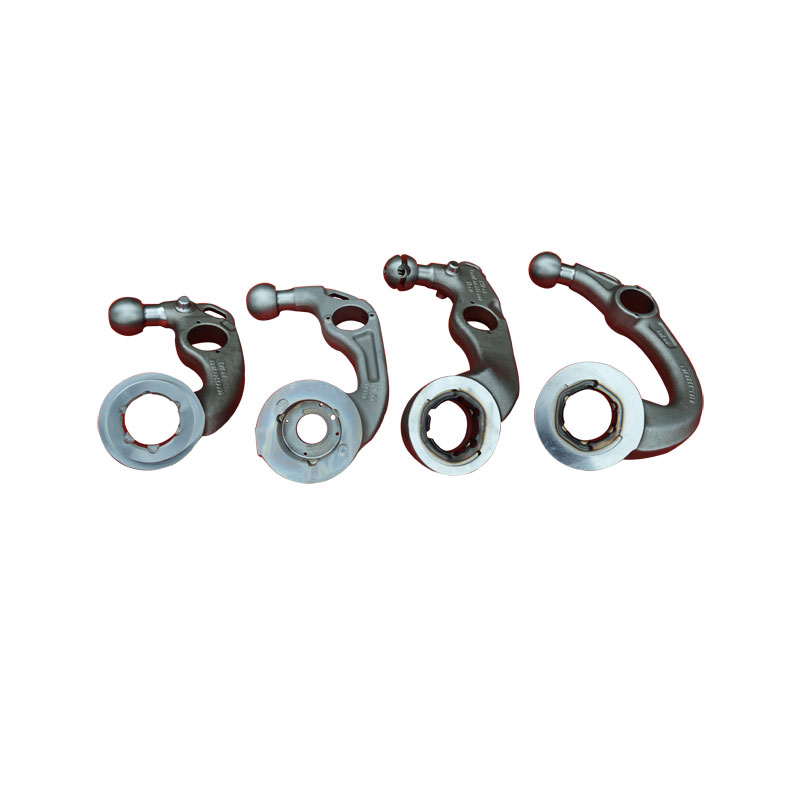Main classification of forging
2022-08-11
Forging and pressing are mainly classified according to forming mode and deformation temperature. According to the forming method, forging and stamping can be divided into two categories; According to the deformation temperature, the forging can be divided into hot forging, cold forging, warm forging and isothermal forging.
Hot forging
It is forging above the recrystallization temperature of a metal. Increasing the temperature can improve the plasticity of the metal, is conducive to improving the internal quality of the workpiece, so that it is not easy to crack. The high temperature also reduces the deformation resistance of the metal and reduces the tonnage of the forging machinery required. But the hot forging and pressing process is more, the workpiece accuracy is poor, the surface is not smooth and clean, and the forging is easy to produce oxidation, decarbonization and burning. When the workpiece is large and thick, the material strength is high and the plasticity is low (such as the rolling of the extra-thick plate, the drawing of the high carbon steel rod, etc.), the hot forging is used.
Cold forging
Is below the metal recrystallization temperature of the forging press, usually referred to as cold forging press at room temperature, and will be higher than room temperature, but not more than the recrystallization temperature of the forging press called warm forging press. The precision of warm forging is higher, the surface is smoother and the deformation resistance is less.
The workpiece formed by cold forging and pressing at room temperature has high precision in shape and size, smooth surface and less processing procedure, which is convenient for automatic production. Many cold forged and cold stamped parts can be used directly as parts or products without the need for cutting. But cold forging, because of the low plasticity of the metal, deformation is easy to produce cracking, deformation resistance, need a large tonnage of forging and pressing machinery.
Warm forging
The forging press above normal temperature but not exceeding the recrystallization temperature is called warm forging press. The metal is preheated, the heating temperature is much lower than the hot forging press. The precision of warm forging is higher, the surface is smoother and the deformation resistance is less.
Isothermal forging
Hot forging
It is forging above the recrystallization temperature of a metal. Increasing the temperature can improve the plasticity of the metal, is conducive to improving the internal quality of the workpiece, so that it is not easy to crack. The high temperature also reduces the deformation resistance of the metal and reduces the tonnage of the forging machinery required. But the hot forging and pressing process is more, the workpiece accuracy is poor, the surface is not smooth and clean, and the forging is easy to produce oxidation, decarbonization and burning. When the workpiece is large and thick, the material strength is high and the plasticity is low (such as the rolling of the extra-thick plate, the drawing of the high carbon steel rod, etc.), the hot forging is used.
Cold forging
Is below the metal recrystallization temperature of the forging press, usually referred to as cold forging press at room temperature, and will be higher than room temperature, but not more than the recrystallization temperature of the forging press called warm forging press. The precision of warm forging is higher, the surface is smoother and the deformation resistance is less.
The workpiece formed by cold forging and pressing at room temperature has high precision in shape and size, smooth surface and less processing procedure, which is convenient for automatic production. Many cold forged and cold stamped parts can be used directly as parts or products without the need for cutting. But cold forging, because of the low plasticity of the metal, deformation is easy to produce cracking, deformation resistance, need a large tonnage of forging and pressing machinery.
Warm forging
The forging press above normal temperature but not exceeding the recrystallization temperature is called warm forging press. The metal is preheated, the heating temperature is much lower than the hot forging press. The precision of warm forging is higher, the surface is smoother and the deformation resistance is less.
Isothermal forging
Is that the blank temperature is kept constant during the whole forming process. Isothermal forging is performed to take advantage of the high plasticity of certain metals at the same temperature or to obtain specific structures and properties. Isothermal forging requires the die and blank to be kept at a constant temperature together, which is expensive and is only used for special forging processes such as superplastic forming.

X
We use cookies to offer you a better browsing experience, analyze site traffic and personalize content. By using this site, you agree to our use of cookies.
Privacy Policy



